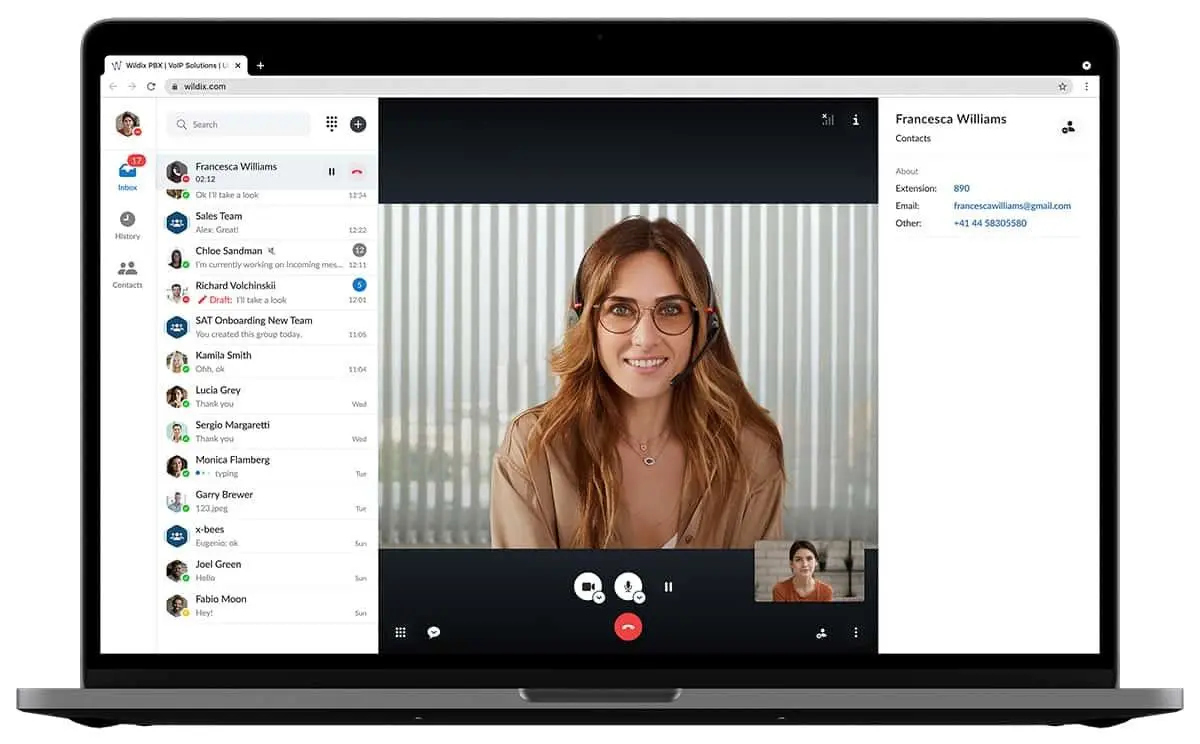
When you hear the word teleconferencing, what comes to mind? A packed boardroom with a speakerphone? Audio-only calls? Or does it extend to video?
In fact, what is a teleconference?
Breaking the word down, “tele” comes from the Greek word for “far,” while “conference” describes a meeting between two or more people. Put simply it’s a real-time conversation held over a distance and in today’s world, we couldn’t live without it. From international business meetings to connecting with friends and family, teleconference services have reduced the distance between us, letting us share information at a speed that would have astonished our ancestors.
But how did we get here? Let’s take a step back and look at the evolution of teleconference technology through the ages to see where it may lead.
Smoke and Pigeons: The Beginnings of Remote Communication
Despite our best efforts, the human voice can naturally only travel so far. While techniques like yodelling can extend its range by changing pitch and employing a simplified code, the sound still can’t travel much farther than the next village.
Visual signals, however, can be spotted at a much further distance than sound can clearly travel. That’s why the Great Wall of China relied on smoke signals to warn of invasions and why signal mirrors are still used to attract the attention of search and rescue aircraft today.
But visual mediums have their own challenges. They’re still limited by line of sight, relying on multiple signalers or stations to repeat the message. In fact, this was the major downfall of the optical telegraphs, which consisted of moveable shutters on the top of specially designed outposts and became particularly popular in France during the Napoleonic era. Creating the outposts was expensive and cumbersome, and their effectiveness ended where large bodies of water began. As a result, the technology never proved a real commercial challenge to mail or even the friendly carrier pigeon, two services that could trace their origins back to ancient Persia.
However, it did set the stage for another coded long-distance messaging service: the telegraph.
The telegraph was a leap forward from optical messaging to electrical. With nothing but a cable connecting two telegraphs, messages could suddenly be sent over previously unimagined distances. And it didn’t take long to catch on. It took less than 20 years to go from Morse’s first message in 1844 to the laying of the first trans-Atlantic cable. It revolutionized shipping, made it easier to calculate longitude and even played a role on the battlefield. It allowed people to instantly communicate over a distance as wide as the Atlantic Ocean — making the first true telemeeting possible.
The Rise of Teleconferencing
But for all the gains that the telegraph brought, it still required a skilled operator — or later, a machine — to read the codes and translate them into words. The result was written words on a page, which couldn’t carry all the nuances of a spoken conversation.
That all changed in 1876 with Alexander Graham Bell’s patent for the telephone. The wires laid for the telegraph let the new technology quickly take hold with the demand prompting the development of switchboards, ultimately leading to the development of the global public switched telephone network (PSTN). The telephone completely changed long-distance communication by finally allowing two or more people to have a conversation in real-time, not a delayed exchange of coded messages, regardless of where they were in the world. The age of teleconference services had finally arrived.

The need to lay cables, however, meant that there were still places the telephone couldn’t reach. Radio signals, first used for the wireless telegraph, helped to overcome this problem. The invention of the cordless phone in the 1950s and early mobile phones were able to use radio signals to send and receive calls from the PSTN without being directly wired to it, effectively making a teleconference phone that could move with the user. It was, however, very easy to intercept calls with just a radio transceiver, making wireless phones less secure than wired ones.
But the limitations of copper cables aren’t just about being tied down — they’re also limited in the amount of information they can carry. Since the public launch of the internet in 1993, the growing amount of data forced not only the move from copper to optic fiber cables but also the switch from carrying voice along analog systems to digital ones. As digital transmission converts sound to data, it makes it easier to encrypt and transport over wireless networks, including large communication satellites, solving the security issues faced by first-generation mobile phones and paving the way for voice over internet protocol (VoIP) calling. And with everything in place to turn a computer into a teleconference phone, suddenly the possibility of conversing with more than just audio was possible — the time for video teleconferencing had arrived.
The Arrival of Video Teleconferencing
When we speak in person, we share more than just words — our body language also speaks for us. So, if the goal of long-distance communication is to carry all the meaning we wish to share, what good is a teleconference that doesn’t have video? In fact, the idea of transmitting audio and video at the same time goes back at least as far as the 1870s. However, it wasn’t until the 1960s that AT&T actually offered the service, though it was only available in three American cities, had to be reserved in advance and cost the equivalent of $255 in today’s money for a three-minute phone call.
The desire for teleconference services that included video continued to grow, mainly driven by international businesses looking to connect their widely distributed offices. Even in the ‘80s, these solutions were expensive, and they often required a full room of equipment. But, with the internet and widespread adoption of personal computers, suddenly the tools and infrastructure were in the right place. Just as voice could be sent in data packets, so could video. And devices with inbuilt cameras, like laptops and mobile phones meant that people had everything needed to make a video call without investing in expensive dedicated hardware. All that was left to develop was the software.
In 2003, all major instant messaging services from AOL to MSN Messenger embraced video calling, finally bringing video teleconference technology to the average consumer. That same year, Skype broke through as the most popular teleconference app, allowing up to 25 people to join the same video call after just downloading the program and connecting to the internet.
Again, it wasn’t all smooth sailing. While by 2000 80% of long-distance communication used fiber optic cables, most of the local internet connections were still based on the old copper network, so speed was limited. Video teleconferencing was often jerky and often lost connection. To run a successful call, no one else could stream, download or even use the internet on the same router. Cameras, inbuilt or external, were also not of the highest quality and often suffered from driver errors or had other compatibility issues. And of course, the quality of the software varied widely, depending on the machine, operating system and available updates.
What Is a Teleconference in the 21st Century?
Little by little, faster processors and alternatives to dial-up internet access meant that more and more data could be transmitted at a faster speed. Still, a teleconference app, such as Skype and later Zoom, required users to download and install programs in order to enjoy their services. Without easy access to APIs or a standard protocol across browsers, it was the only reliable way for them to offer a connection. That all changed, however in 2011, when Google released WebRTC, an open-source project that allowed real-time communications to happen in the browser. Almost immediately after its release, Wildix began incorporating it into its unified communications offer, while Google Hangouts, Google’s own unified messaging platform, only dabbled in early adoption.

This technology helped create an explosion of teleconference services dedicated specifically to the business market and to average consumers. With a wider range of options and more reliable service, everything from interoffice and international meetings to language classes could all happen remotely, saving time on transportation and allowing people to attend events such as webinars, covering topics they would not have had access to otherwise.
2011 also proved to be the year Microsoft took on Google Docs with the release of its online productivity tool, Microsoft Office 365+. Six years later, they both released a teleconference app designed to work with their own suite of products: Microsoft Teams and Google Meet. Finally, companies had the software, hardware and infrastructure needed for employees to work from anywhere in the world. Yet, according to Gartner, before 2020 only about 4% of job roles in most companies were remote or hybrid. That, however, was about to change.
COVID and the Dominance of Teleconferencing
The pandemic and its resulting lockdowns thrust everyone who could work remotely into the home office. Companies that didn’t already have a plan in place to support remote work grasped at the tools they did have, quickly patching together a solution and policy to support work from home. Without being able to meet in the office, park or even cafe, teleconference technology soon became a part of most people’s lives.
Birthdays were celebrated over Zoom and the alerts from Microsoft Teams haunted university students and workers alike. Overnight, people who would have previously asked “what is a teleconference” found that teleconference services were the only way to connect with people outside the home. And while gatherings with family and friends left a lot to be desired, working from home brought a number of surprising benefits. Not only did workers benefit from being able to do small chores around the house and getting back the time for their usual commute, but employers noticed that productivity was the same, or even higher, than working in the office. Businesses that could work remotely and hold teleconference meetings, especially ones that offered remote shopping and delivery services like Amazon, boomed during the pandemic.
Once lockdowns ended, however, not everything went back to pre-pandemic normal. Yes, people craved in-person events, but not if they thought the risk was too high or if it was for work. Why take the time to travel to a lunchtime talk if you could just join virtually? While people wanted to meet their friends in person, they were slower to make the move to corporate events.
And while certain employers have since mandated a return to the office, not all employees have jumped at the chance. Many instead have left their jobs as part of the Great Resignation, choosing instead to work for companies that allowed them to have the flexibility of remote and hybrid work that they tasted during the pandemic.
Future of Teleconferencing
The widespread adoption of teleconference technology has led developers to consider the next stages of telemeetings. Just like how the evolution of long-distance communication didn’t stop with the telegraph, there are a number of ways teleconferencing is looking to evolve.
What is a teleconference of the future?
Opinions vary, but the teleconference of the future is likely one that incorporates:
- Virtual reality
- Augmented reality
- Artificial intelligence
VR Teleconferencing
Already in development long before the pandemic, virtual reality (VR) teleconference meetings promise to be more interactive than current teleconference services. In fact, they’re already happening. Through the use of an avatar, you can join a meeting in the metaverse allowing you to feel like you’re not only in the room but also allow you to project your body language into the meeting, something that can be harder to notice on small video thumbnails. Virtual landscapes could also allow teams to work on a project together through virtual tools.
AR Teleconferencing
In contrast, augmented reality could allow participants to be projected into a physical meeting room or simply make it easier to overlap other virtual tools or assets into the meeting space, giving teams the opportunity to visualize projects without having to connect everyone to VR equipment.
AI Teleconferencing
However, right now it’s artificial intelligence that has the real power to evolve how we meet. And with the huge amount of data that we produce, it’s no wonder that AI tools are already found in our meeting rooms. From AI-powered cameras that automatically detect and zoom in on the speaker, like the ones found with the WizyConf station, to technology that assesses and transcribes our meetings, we already use AI every day to make our teleconferences more productive and user-friendly. And with last year’s releases of cutting-edge AI language models, we already have the tools we need to create an active AI interface that can quickly access specific knowledge or even serve as a built-in translator, allowing us to finally jump one of the largest communication hurdles — language.
Teleconferencing: Borderless Communication
So, what is a teleconference and what does the future of meetings hold? Well, in short, what we’re already seeing — the breaking down of borders. The goal for all of these technologies will be to make it as easy to talk and collaborate with a potential client in Mongolia or Lebanon as it is with the person sitting next to you at work. And with the power to access knowledge and specialties from around the world, companies will be able to make the best use of talent regardless of borders.
For more information on the history and future of communications, subscribe to receive our magazine for free!